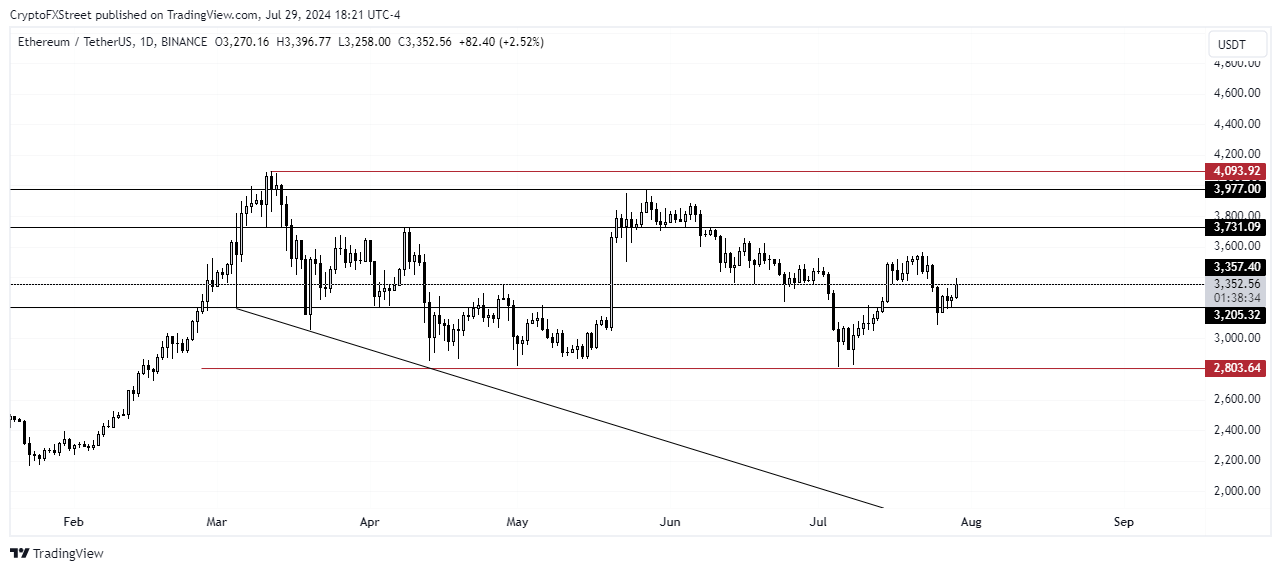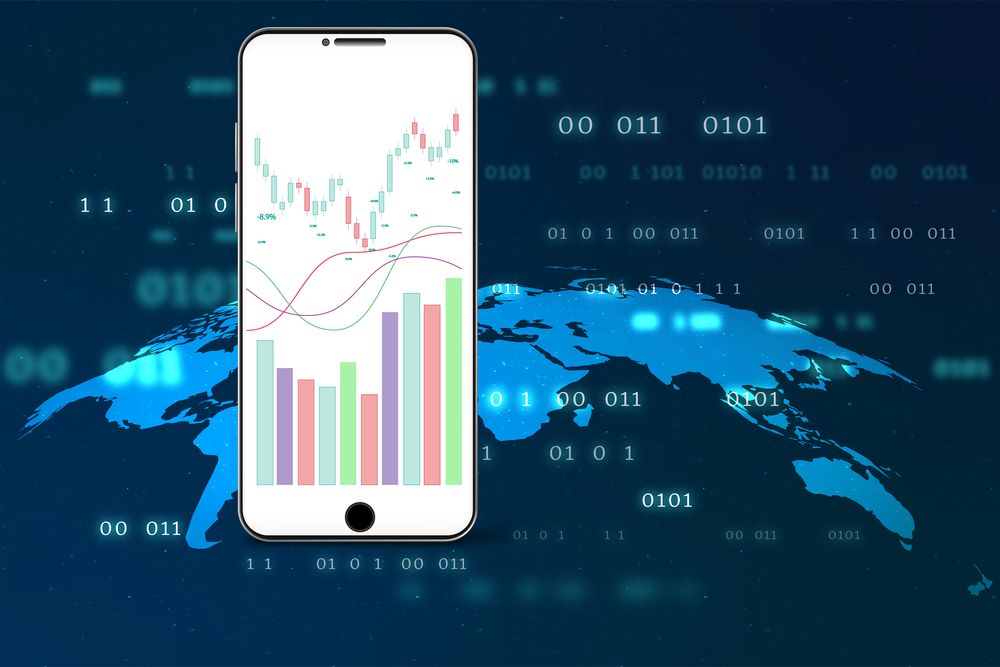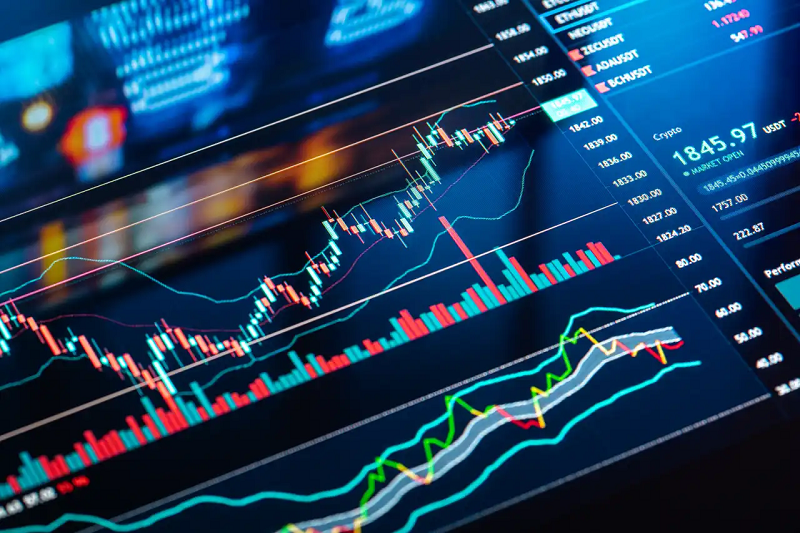Ethereum slips in key metric, falls to fifth position
- Ethereum ETFs launch has attracted increased investors’ interest to Layer 1 protocols.
- Ethereum falls to number five among top fee generating protocols.
- Ethereum may continue trading horizontally until Grayscale ETHE outflows cool.
Ethereum is up 3% on Monday following outflows across Ethereum ETFs and increased attention towards Layer 1 blockchain networks.
Daily Digest Market Movers: 21Shares Ethereum ETF boosts transparency, sees increased social volume
These are the top Ethereum-related stories in the past few hours:
- Asset manager 21Shares partnered with Chainlink to enable the integration of its Proof of Reserve into 21Shares Core Ethereum ETF (CETH). The move will ensure that 21Shares is transparent about the assets backing CETH.
- Santiment social data shows that investors have shifted their attention from meme coins and low-cap tokens towards major Layer 1s like Ethereum, Bitcoin and Solana. The market has historically shown strength and occasionally rallied when investors focus more on large-cap tokens.
- In a recent analysis by Token Terminal, Ethereum fell to fifth place among the top ten fee-generating protocols in 2024. ETH's drop may be due to fewer and cheaper transactions on Ethereum's Mainnet since the introduction of blobs following the Dencun upgrade in March.
- Ethereum ETFs recorded net outflows of $285 million last week. The outflows came as a result of increased selling pressure on Grayscale Ethereum Trust (ETHE), which saw it witness an exodus of over $1 billion. Many analysts have speculated that it would be difficult to establish the impact of ETH ETFs until ETHE outflows slow down.
- Spot-on-Chain said a big whale deposited 25.8K ETH worth $87M to Binance in the past few hours. From May 31 to July 25, the whale withdrew 26,721 ETH from Binance at an average price of $3,457. He has deposited 26,660 ETH to the CEX at only ~$3,376. His estimated total loss from ETH is $2.16M (-2.34%).
ETH Technical Analysis: Ethereum to continue sideways move
Ethereum is trading around $3,350 on Monday, up 3% on the day. ETH's 24-hour liquidation is $48.37 million, with long and short liquidations accounting for $26.9 million and $21.47 million, respectively.
Ethereum recently broke above the $3,357 resistance despite most traders being bearish, as visible in ETH's Long/Short Ratio, which is at 0.905. The bearish sentiment may be due to investors expecting more price declines due to outflows from ETHE. As a result, ETH may continue its horizontal trend but tilted towards the downside. The move aligns with a drop in ETH options open interest (OI) which declined to $6.09 billion, indicating uncertainty among investors.

ETH/USDT Daily chart
However, ETH could rise similarly to Bitcoin after outflows from Grayscale cooled. Hence, ETH could attempt to break above the $3,730 key resistance.
In the short term, ETH could rise to $3,413, where positions worth $60.21 million risk liquidation.
Cryptocurrency metrics FAQs
The developer or creator of each cryptocurrency decides on the total number of tokens that can be minted or issued. Only a certain number of these assets can be minted by mining, staking or other mechanisms. This is defined by the algorithm of the underlying blockchain technology. Since its inception, a total of 19,445,656 BTCs have been mined, which is the circulating supply of Bitcoin. On the other hand, circulating supply can also be decreased via actions such as burning tokens, or mistakenly sending assets to addresses of other incompatible blockchains.
Market capitalization is the result of multiplying the circulating supply of a certain asset by the asset’s current market value. For Bitcoin, the market capitalization at the beginning of August 2023 is above $570 billion, which is the result of the more than 19 million BTC in circulation multiplied by the Bitcoin price around $29,600.
Trading volume refers to the total number of tokens for a specific asset that has been transacted or exchanged between buyers and sellers within set trading hours, for example, 24 hours. It is used to gauge market sentiment, this metric combines all volumes on centralized exchanges and decentralized exchanges. Increasing trading volume often denotes the demand for a certain asset as more people are buying and selling the cryptocurrency.
Funding rates are a concept designed to encourage traders to take positions and ensure perpetual contract prices match spot markets. It defines a mechanism by exchanges to ensure that future prices and index prices periodic payments regularly converge. When the funding rate is positive, the price of the perpetual contract is higher than the mark price. This means traders who are bullish and have opened long positions pay traders who are in short positions. On the other hand, a negative funding rate means perpetual prices are below the mark price, and hence traders with short positions pay traders who have opened long positions.







